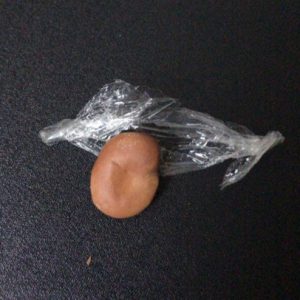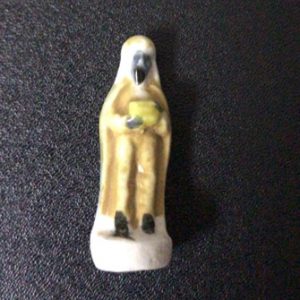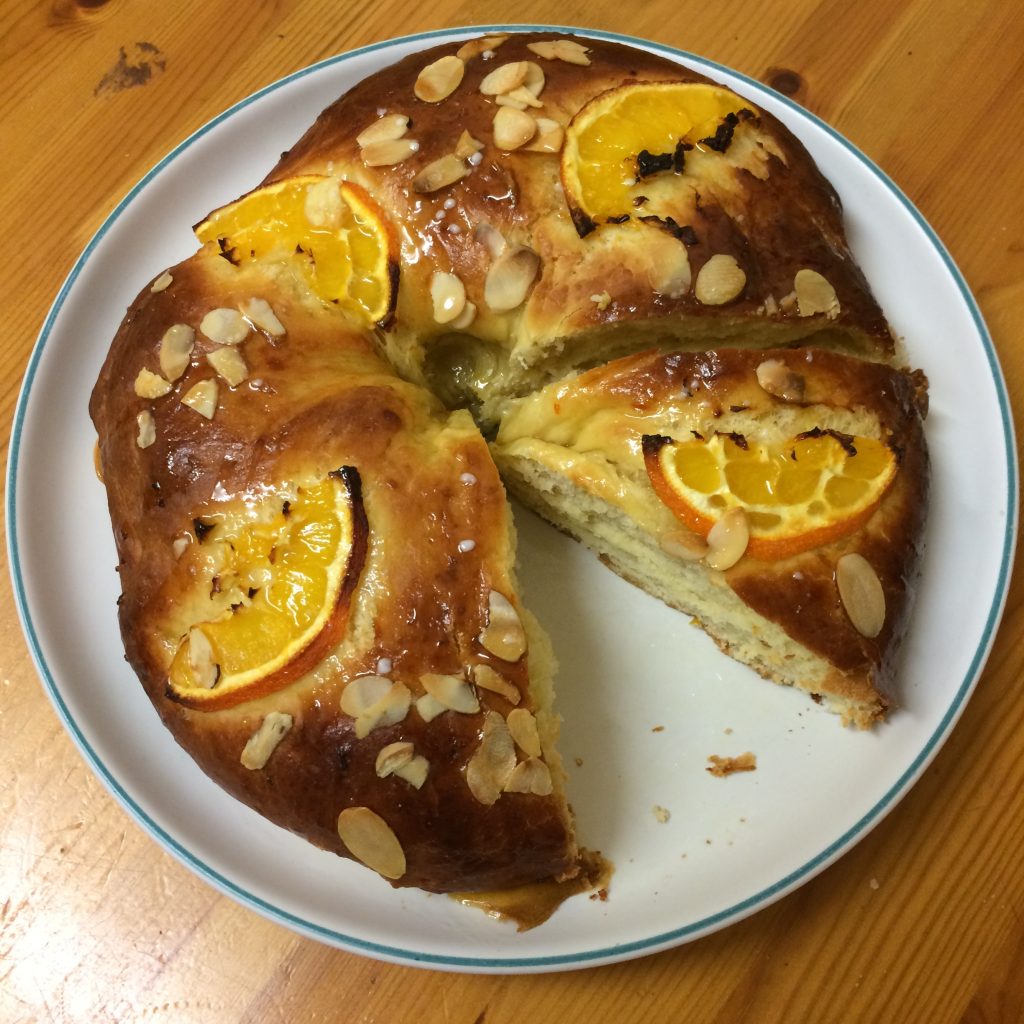By Manuel Santos Gutiérrez and Tomos Jones
Today we’re heading to España (Spain), not strictly for Christmas but rather for día de Reyes, meaning ‘Kings’ Day’, i.e. Epiphany. According to catholic tradition, on January 6th – twelve days after Christmas – Jesus was visited by the Three Wise Men. In Spanish they’re called los tres Reyes magos, literally meaning the ‘three wizard kings’. They came from different parts of the world to welcome Jesus with three gifts: gold, incense and myrrh. In fact, día de Reyes is popular in many Hispanic cultures; so much so, that Christmas presents are given on January 6th as opposed to Christmas day and it is not Santa but the Three Wise Men who have to climb our chimneys.
On día de Reyes it’s typical to eat a Roscón de Reyes, which in English we might call Spanish Twelfth Night bread or Spanish Kings’ cake. It’s a circular or oval cake whose defining ingredients are fresh yeast and orange blossom water. Bakers can add fruta escarchada (candied fruit, although literally meaning ‘frosted fruit’) on top, giving the colourful and characteristic touch to this iconic piece of the Spanish confectionery.

So, what’s the connection with #AdventBotany? It’s Vicia faba L., the humble broad bean which belongs to the legume family, Leguminosae (also known as Fabaceae). It’s important on día de Reyes because it is hidden within the Roscón de Reyes. Although this tradition might differ slightly between cultures, here we shall use one family’s example from the Basque country. The bean (haba, in Spanish) is hidden within the Roscón de Reyes along with a figurine of a king or another religious figure.

The example we have here is one of the Three Wise Men – most surely Gaspar, who brought Jesus the incense.
Whoever finds the bean in their slice, is responsible for buying the Roscón the following year, or you can be lucky and find the figurine. This idea might seem familiar; of course, it’s traditional in Britain to put a silver sixpence in our Christmas pudding – bringing wealth and good fortune in the new year.
The Roscón de Reyes is more often than not bought from the local baker. However, for día de Reyes earlier this year, Tomos attempted to make it himself. As mentioned, it’s commonly decorated with candied fruits, but we chose another traditional option of sliced oranges. Those with a sweet tooth can also find the Roscón filled with whipped cream or custard cream; but after the indulgence of Christmas perhaps it’s better without.
Although Tomos had never tried a Roscón before – let alone baked one – it tasted (almost) as good as a Roscón from home. This Spanish tradition can be enjoyed again very soon, let’s see who finds the haba and who finds Gaspar!

¡Feliz Navidad! – Nadolig llawen (in Welsh) – Merry Christmas!
